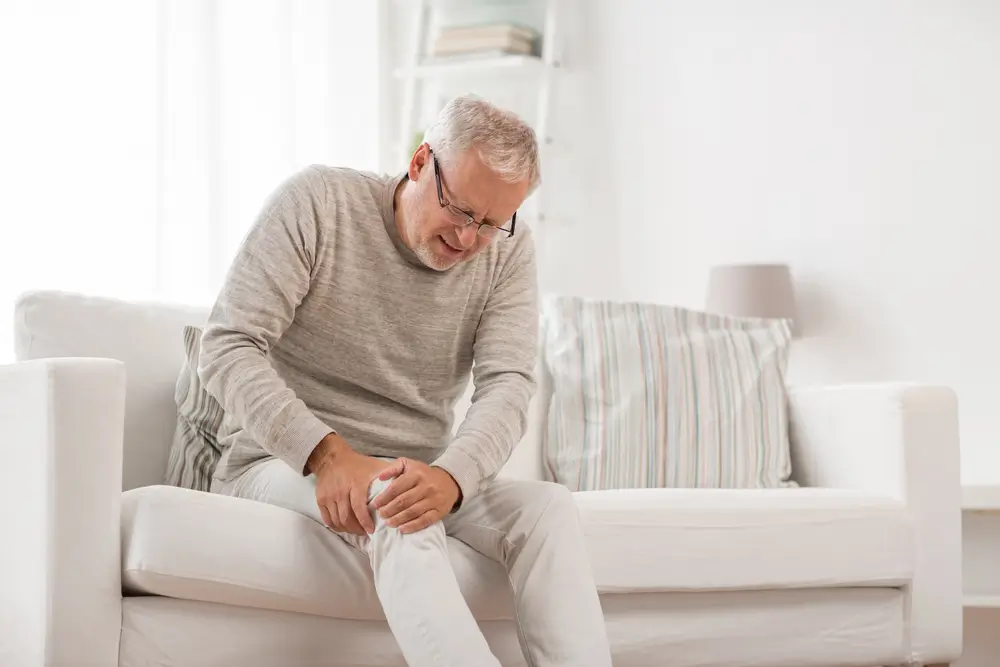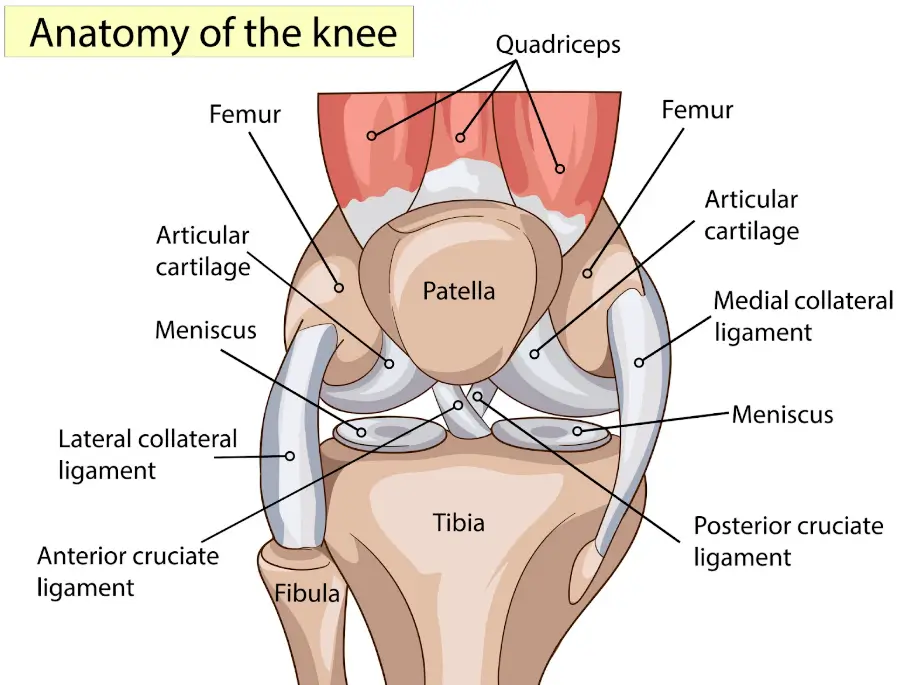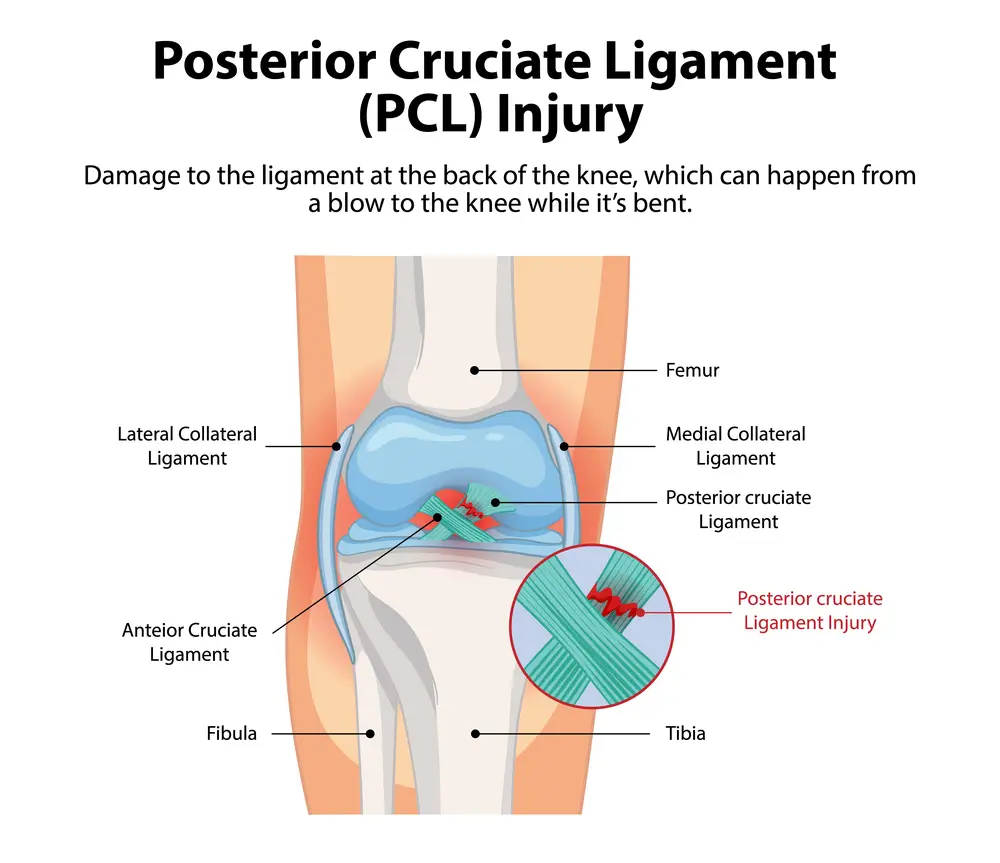Our Alternative To Knee Surgery

Interventional orthobiologics may offer a less invasive option for individuals looking to support knee health and function. Physicians in the licensed Regenexx network perform procedures using Regenexx lab processes, which concentrate on the body’s natural biologics. These procedures may help support recovery from knee arthritis, meniscus tears, and ACL injuries.
Procedures using Regenexx lab processes are designed to help support joint function and mobility. In some cases, these non-surgical options may also allow individuals to explore alternatives to prescription medications or surgery, depending on their specific condition and physician recommendations.
For many people, knee problems can deeply impact daily life, sometimes leading to long-term challenges like instability, pain, and reduced mobility. The worry that a knee might lock, catch, or give way unexpectedly can overshadow simple activities—such as walking in the park, caring for grandchildren, or taking a dog for a walk.
Despite recurring discomfort and instability, some avoid seeking help, fearing invasive procedures or being frustrated by past treatments that didn’t provide relief. These challenges leave many seeking an alternative that may help support knee function, reduce pain, and promote joint health.
Physicians in the licensed Regenexx network utilize Regenexx’s patented protocol as part of a personalized approach to care. Depending on a physician’s evaluation, these non-surgical options may be considered for individuals looking to support knee mobility and overall joint function.
Understanding How The Knee Joint Works
The knee joint works like a hinge, enabling controlled forward and backward motion with limited side-to-side movement. It connects the femur (thigh bone) to the tibia (shin bone), while the patella (kneecap) sits at the front.
- Range Of Motion – The knee’s hinge-like design primarily allows bending (flexion) and straightening (extension), with a typical range of 0 to 135 degrees. This differs from ball-and-socket joints, like the hip or shoulder, which allow for rotational movement and a broader range of motion.
- Injury Susceptibility – Acute knee injuries often result from twisting, side impacts, direct trauma, or misalignment. Muscle imbalances, improper footwear, and excess weight may contribute to an increased risk of injury.
- Weight-bearing Impact – As a weight-bearing joint, the knee endures significant forces, with activities like running putting more stress on it than walking. Extra body weight adds even more strain, increasing the load on knee tissues.
Over time, repeated strain may contribute to cartilage breakdown, chronic inflammation, and joint degeneration, such as osteoarthritis. Knee pain may result from sudden (acute) injuries or from ongoing (chronic) joint wear.
Knee Joint Components

The knee joint is one of the most complex joints in the body, which may make it more susceptible to injury and wear.
- Bones in the Knee – The knee joint is composed of three bones: the femur (thigh bone), tibia (shin bone), and patella (kneecap). At the end of the femur are rounded areas called condyles, which help keep the joint’s movement smooth. The two condyles in the knees are:
- Medial condyle: Located on the inner side of the knee.
- Lateral condyle: Located on the outer side of the knee.
- Cartilage in the Knee – Cartilage is a rubbery tissue that cushions the bones. It protects bone ends from friction, distributes body weight, and absorbs impact forces. There are two main types in the knee:
- Articular cartilage covers the ends of the femur, tibia, and back of the patella.
- The meniscus is a C-shaped piece of fibrocartilage that stabilizes and protects the joint. Each knee has two menisci: the medial meniscus, located on the inner knee, and the lateral meniscus, located on the outer knee.
Degeneration of cartilage, as in osteoarthritis, is a common concern that may contribute to pain and reduced mobility.
- Bursa sacs in the Knee – Bursae are small sacs that reduce friction between tissues in the knee, such as between bones, tendons, and muscles. They can become inflamed, a condition known as bursitis, which may develop due to repetitive movements, excessive pressure, or injury. When inflamed, bursae may cause pain, swelling, and limited mobility.
- Ligaments in the Knee – Ligaments are bands of connective tissue that stabilize the knee by holding bones in place. Key knee ligaments include:
- Anterior cruciate ligament (ACL): The ACL is located at the center of the knee. It helps keep the tibia aligned with the femur, which may help prevent injuries like dislocations. The ACL also provides rotational stability, meaning it helps limit excessive inward rotation of the knee.
- Posterior cruciate ligament (PCL): The PCL is also centrally positioned in the knee joint. It helps prevent the tibia from sliding backward and stabilizes the knee during movements like walking downhill.
Ligament tears may result in instability, pain, swelling, and reduced knee mobility.
- Tendons in the Knee – Tendons connect muscles to bones. Together, muscles and tendons facilitate knee flexion and extension. Key knee tendons include:
- The quadriceps tendon links the thigh muscle (quadriceps) to the patella.
- The patellar tendon connects the patella to the tibia.
- Hamstring tendons that insert on the side of the tibia and bend the knee.
Why Consider A Knee Surgery Alternative?
Patients are often presented with steroid injections and invasive knee surgeries as primary solutions for knee pain. These treatments may not address underlying causes and have been associated with side effects, complications, or temporary pain relief.
A literature review found that the effects of steroid injections may last about 2–4 weeks, and patients with knee osteoarthritis (OA) sometimes require up to four injections per year. Research reported in the study highlights that repeated steroid injections may contribute to the degeneration of cartilage, accelerating the progression of OA.
Common orthopedic knee surgeries include the surgical removal of the meniscus (meniscectomy), meniscus repair, and the replacement of the knee joint with a prosthetic knee (knee arthroplasty).
A 2024 study reported failure rates of up to 15% for meniscectomy and 17.6% for meniscus repair, with complication rates of 7.5% and up to 21.4%, respectively. Meniscectomies were also linked to the progression of degenerative changes in the knee joint. Another study published in 2021 suggested that failure rates for meniscus repair may be as high as 19%.
A 2023 study indicates that 10% to 30% of patients reported dissatisfaction after knee replacement surgery due to factors such as persistent pain, instability, joint infection, and the need for revision surgery.
Even when successful, surgery typically requires lengthy rehabilitation to regain mobility and strength. In some cases, surgery has been associated with degenerative changes in the knee joint over time.
Interventional orthobiologic procedures offer a non-surgical approach that may use a patient’s own biologics to support joint function and mobility. For individuals managing knee conditions, consulting with a physician in the licensed Regenexx network can help explore all available options.
Are Procedures Using Regenexx Injectates Suitable Alternatives To Knee Surgery?
Procedures offered by physicians in the licensed Regenexx network provide a non-surgical option for supporting knee function and helping manage discomfort by promoting the body’s natural repair processes.
Through advanced image guidance, physicians performing procedures with Regenexx lab processes inject custom concentrations of a patient’s biologics into targeted areas of the knee. This precise approach is designed to support joint stability and may help promote tissue health in ways that differ from traditional corticosteroid injections.
These procedures are performed on an outpatient basis, with minimal downtime for most patients. Depending on a physician’s evaluation, these image-guided procedures may provide a less invasive option for individuals exploring non-surgical approaches to joint health.
Exploring Non-Surgical Options For Joint Health
The Regenexx approach provides non-surgical options that may help support joint function and manage discomfort for individuals with knee conditions. In some cases, these procedures may be considered as part of a personalized care plan for patients exploring less invasive options.
Minimally Invasive
Physicians in the licensed Regenexx network offer non-surgical procedures that utilize advanced, image-guided injections. These interventional orthobiologic procedures are designed to support joint function and mobility while potentially resulting in less downtime compared to traditional surgical recovery.
Supports Function
Traditional approaches, such as corticosteroid injections or surgery, may provide short-term symptom relief but also carry certain risks and considerations.
Physicians in the licensed Regenexx network offer non-surgical procedures designed to support knee structure and function by using the body’s own biologics. Procedures using Regenexx lab processes may assist with joint stability and movement, helping patients maintain daily activities.
Helps Manage Pain
Procedures using Regenexx lab processes may help manage discomfort and promote overall joint function, allowing individuals to explore less invasive options for musculoskeletal care.
Knee Conditions That Can Benefit From Non-Surgical Procedures
As noted above, the complexity of the knee joint and its key role in bearing loads during movement may make it more susceptible to several conditions. Many of these are traditionally managed through pain-relieving medications, corticosteroid injections, and, in some cases, surgery.
However, it is important to consider all available treatment options before surgery, as many knee conditions may respond to non-surgical procedures.
Knee Bursitis
Knee bursitis occurs when the fluid-filled sacs that cushion the knee joint, the bursae, become inflamed. It can result from tendon damage, repetitive pressure, overuse, direct knee trauma, and, more rarely, infection. It may cause localized swelling, pain, and restricted movement.
Treatment may include steroid injection, surgical drainage or removal of the inflamed bursa if the condition does not respond to other interventions. However, research indicates that draining the bursa to release excess fluid is a temporary solution.
Without addressing the underlying issue, the liquid can build up again quickly, and every time drainage is performed, there is a risk of bacterial infection, bleeding, and nerve damage. Currently, no general guidelines exist on when surgical removal of the bursa is recommended.
Tendonitis
Tendonitis refers to the inflammation or irritation of tendons. Common causes include overuse, sudden increases in activity levels, or muscle imbalances that place excessive strain on the tendons, such as participation in high-intensity sports and certain job roles.
Surgical interventions, such as tendon repair or tendon release, may sometimes be considered to alleviate pain and restore function. However, tendons in the knee, like the patellar tendon, receive a blood supply, which may support natural healing in some cases of tendonitis. Procedures using Regenexx injectates aim to support the body’s natural healing response by delivering concentrated biologic materials directly to the affected tendon.
Pes Anserine Bursitis
Pes anserine bursitis occurs when the pes anserine bursa, located on the inner side of the knee just below the joint, becomes inflamed. Risk factors include repetitive knee bending and misaligned knee mechanics. Typical symptoms may include localized swelling and tenderness, especially during stair climbing or prolonged walking.
In severe cases, surgical intervention may be considered to remove or drain the inflamed bursa. However, research suggests the pes anserine area may often respond well to therapies like stretching and exercise programs.
PCL Tear
The posterior cruciate ligament (PCL) is a strong ligament that stabilizes the knee and helps prevent the tibia from moving too far backward, which may contribute to injuries like dislocations. PCL tears typically result from a direct blow to the front of the knee, often during car accidents or contact sports. These injuries may cause knee pain, swelling, and reduced stability. Severe tears may impact overall knee function.

Surgical reconstruction of the PCL may be considered in case of severe or complete tears. However, the PCL blood supply allows some tears to heal without intervention. Interventional orthobiologic procedures may support healing by delivering growth factors to the affected area.
- Anterior Cruciate Ligament (ACL) Tears – An ACL tear is a partial or complete rupture of the anterior cruciate ligament in the knee, often caused by sudden twists or high-impact movements. It may lead to pain, swelling, instability, difficulty bearing weight, or changing direction. Read More About ACL Tears.
- Iliotibial Band Syndrome (ITBS) – Iliotibial Band Syndrome (ITBS) is a common overuse injury due to irritation of the iliotibial band, often worsened by running, cycling, or repetitive knee movements. Other symptoms may include swelling, tenderness, and a sharp or burning sensation along the outside of the knee, especially during activity. Read More About Iliotibial Band Syndrome (ITBS).
The Regenexx Approach To Knee Health
Physicians in the licensed Regenexx network offer non-surgical options that may help support knee function and mobility. Procedures using Regenexx lab processes utilize interventional orthobiologics, including platelet-rich plasma (PRP) and bone marrow concentrate (BMC) containing the patient’s own biologics. These procedures are designed to support the body’s natural repair processes.
Regenexx SD Injectate
The Regenexx- SD injectate procedure follows a patented protocol using bone marrow concentrate (BMC) which contains the patient’s own biologic materials, including mesenchymal stem cells. Regenexx lab processing techniques are designed to achieve a high concentration of stem cell-containing bone marrow through a proprietary process.
Platelet Rich Plasma Procedures
The Regenexx SCP (super concentrated platelets) pioneered by Regenexx, represents a specialized version of PRP. In this procedure, blood is drawn and processed to isolate the platelets and growth factors. These growth factors are then further purified and concentrated before being injected into the knee using imaging guidance for precision. The Regenexx SCP injectate provides a higher concentration of growth factors compared to standard PRP injectates.
Regenexx PL Injectate
Regenexx PL injectate is a highly specialized derivative of PRP with a faster and more concentrated release of growth factors than traditional PRP. Regenexx’s proprietary platelet-lysate (PL) processing technology has evolved through multiple generations. PL is often combined with other treatments like SCP and bone marrow concentrate.
Procedures Using Regenexx Injectates For Knee Conditions In Numbers
Traditional approaches for knee discomfort often focus on symptom management or addressing specific joint components contributing to discomfort. The Regenexx approach is designed to target the knee joint while also considering the whole body as an integrated system.
Physicians in the licensed Regenexx network use injectates containing growth factors and bone marrow concentrate, which includes the patient’s own biologic materials, to precisely target the knee joint using imaging guidance.
This may help support the healing environment of the knee joint, potentially slow the progression of degenerative conditions like OA, and assist in improving overall knee function, which may reduce the likelihood of surgery and associated complications.
The Regenexx Provider Patient Registry tracked the outcomes reported by thousands of patients with the Regenexx protocol.
Read About Patients Who Have Had Procedures Using Regenexx Injectates
Are You A Candidate For The Regenexx Approach For Knee Injuries Or Arthritis?
If you have chronic or acute knee pain, it is important to consider all options and get a second opinion before choosing surgery. Get in touch with a physician in the licensed Regenexx network to find out whether this approach is right for you and your knee health.
